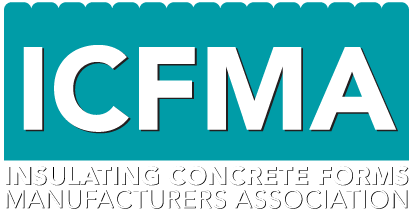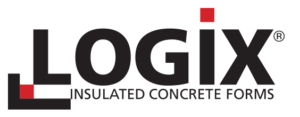CLEB LABORATORIES Thermal wall study quantifies ICF Thermal Mass Effect In Ground Breaking Test
Ottawa, ON., July 1st, 2017 – CLEB Laboratories recently conducted a comprehensive series of impartial studies comparing a traditional insulated wood frame cavity wall to standard 6 inch (150mm) core insulating concrete form (ICF) wall, which demonstrated and quantified the thermal mass effect of an ICF wall.
For decades, the ICF Industry has been asked to provide definitive proof that thermal mass, the air-tightness and continuous insulation features of ICF walls deliver real, quantifiable benefits. Many studies have been conducted in the past by the Portland Cement Association (PCA), the Canada Mortgage and Housing Corporation (CMHC) and the Department of Housing and Urban Development (HUD) all of which were either based on limited field comparisons or thermographic computer modelling. This is the first time a fully SCC & IAC Accredited, and internationally recognized testing facility has been commissioned to evaluate a realistic side-by-side comparison of the two types of wall assemblies within a single study. The study quantifies the benefits of BOTH thermal mass and the continuous insulation properties of ICF technology over traditional code compliant wood framed cavity insulated systems.
The studies were undertaken at CLEB Laboratories (formerly Air-Ins Industries Inc.) in Varennes, QC, Canada and the tests were conducted in strict accordance with ASTM C1363-11 “Standard Test Method for Thermal Performance of Building Materials and Envelope Assemblies by Means of a Hot Box Apparatus”. The test results prove the ICF assembly took nearly 324 hours to reach steady state performance when exposed to an exterior air temperature of -31 degrees F (-35 degrees C) whereas the wood frame wall reached steady state within just 60 hours of the start of the test. Steady state is the point at which the amount of heat being delivered to condition the interior space was exactly equal to the rate of heat transmission that was going through the wall. This indicates that, for most “real world” applications, an ICF wall will likely NEVER reach steady state.
This finding quantifies the “thermal mass” effect of the high mass ICF wall and also illustrates its enormous benefits – in that 264 hour interval in this test, during which the wood-frame wall was in steady state and the ICF wall was not, the ICF wall had 60% less energy loss that the wood-framed wall. What does this mean for building and home owners? Consider two typical homes, each with 2,000 square feet of wall area – one constructed in wood frame to permitted code minimums, the other constructed to the same wall area using ICF technology – and subjecting both to these same test conditions. In terms of average kWH value for all of North America, this study proves that during the most extreme cold conditions an ICF wall could end up saving up to 60% per month in equivalent electrical consumption over any traditionally constructed wood frame wall.
A PDF of this report can be found online at icf-ma.org/thermalstudy or by contacting Natalie Rodgers, Marketing Committee Chair at [email protected].
###
About the ICFMA.: The Insulating Concrete Forms Manufacturers Association (ICFMA) is the North American
non-profit trade association for the Insulated Concrete Form industry and was founded in 2014 by a dedicated group of manufacturers with the interest of improving the quality and acceptance of Insulated Concrete Form construction.
Insulating Concrete Forms Manufacturers Association (ICFMA)
Suite 460, 11-300 Earl Grey Drive,
Ottawa, Ontario, Canada K2T 1C1






